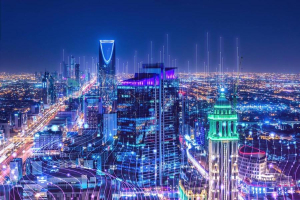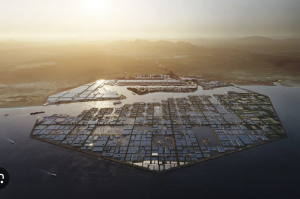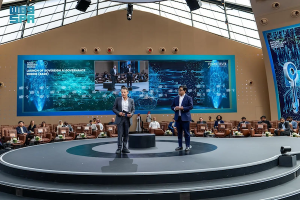
Saudi Arabia is a different place than it was five years ago. The Saudi Vision 2030 plan was announced in April 2016 by then Deputy Crown Prince Mohammed bin Salman as a blueprint for a vibrant society, thriving economy and ambitious national development strategy, all based around 96 strategic objectives designed to diversify the economy. Behind the grandeur of mega-projects like Neom, The Line, AlUla and other flagship developments, Riyadh is itself evolving, bringing inward investment to change the face of the city. New resturants and developments dot the metropolis, widely ranging from Joe & the Juice all the way to Scott's, the iconic London venue.

The plan for diversification in Saudia Arabia begins with its core export, energy, with a move to replace the hydocarbons economy (which accounted for over 60% of GDP) with services, sports, entertainment and other consumer activities. The diversification is more than economic, involving a strategy by the Kingdom to become a leader in renewable and alternative energies. Ramping up solar and wind production to complement natural gas, will make petroleum almost entirely an export commodity.

Meanwhile, the financial sector is loosening, with foreign investment in the Kingdom becoming easier, a lowering of threshold requirements and opening parallel investment tracks within the region, particularly the Gulf states. Part of this includes an effort to attract fund structures to establish a more robust environment for hedge funds and private equity to take root. This in turn is expected to provide structure and liquidity to the emerging startup and tech scene, which is slated to grow from five IPOs last year to over 100 by 2030.
Challenges remain. Talent shortages are real, because building up local tech, finance, and AI/ML expertise rapidly is non-trivial. Governance and regulatory frameworks are still evolving: while the strategy outlines broad visions, implementation at scale always carries risk, and many of the rules remain to be written, let alone finalized.

Here are some stats on how Saudi Vision 2030 is progressing in the Kingdom of Saudi Arabia:
The non-oil sector has reached about 53 % of Saudi Arabia’s real GDP for the first time.
Female labour-force participation has climbed significantly, reaching around 36% of the workforce, surpassing earlier Vision 2030 targets.
Non-oil activities continue to grow at strong rates at over 3-4% annually, slowly replacing the economic mix of hydrocarbon dependence.
While Riyadh builds and reinvents itself as the center fulcrum, Saudi Arabia at large is actively pivoting from an oil-based economy toward a diversified, innovation-driven model, leveraging cutting-edge fields such as data and artificial intelligence as key engines for future growth. Even the DJs on the city's rooftop shisha lounges are making strides.








